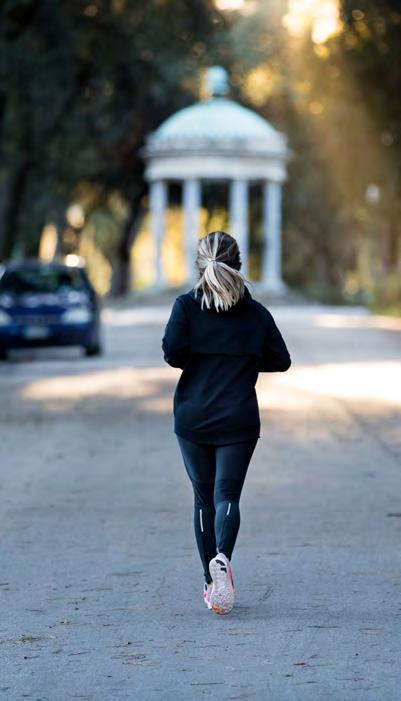
3 minute read
ROME, ITALY
ROME’S WALKING ROUTES GET ITS CITIZENS MOVING
After joining Cities Changing Diabetes in 2017, Rome began mapping the prevalence of diabetes and obesity in the city. More than 130 experts and researchers were involved in the threeyear study examining the impact of urbanisation on type 2 diabetes in the metropolitan area. This research resulted in a preliminary atlas mapping all the sociodemographic and clinical epidemiological data, a report containing insights from the vulnerability assessment and an action plan concluding the mapping process.
In addition to important data and insights, the Cities Changing Diabetes programme in Rome has also resulted in the implementation of a number of good practices.
6.6%
OF PEOPLE IN ROME ARE LIVING WITH TYPE 2 DIABETES44
FREE AND ACCESSIBLE PHYSICAL ACTIVITY
One such example is the Passport of Rome, City for Walking and Health (Passaporto di Roma Città per Camminare e della Salute), a collaboration between Cities Changing Diabetes, a network of municipalities, the Italian Athletic Federation, scientific societies and patient associations that began in 2017 to encourage citizens to take part in free and accessible physical activities.
The constantly evolving programme, which can be downloaded as a smartphone app, currently covers about 460 km in Rome’s metropolitan area. The 74 walking routes, which were designed by Olympic gold medallist Maurizio Damilano, cover urban, tourist, environmental and athletic itineraries. Each of the routes includes information about places of interest, facilities and amenities in the area. Through the app, users can track how far they have walked and challenge themselves – and others – to try new routes.
BUILDING HEALTHY COMMUNITIES
The initiative has received support from local municipalities because it ties in with the existing goals of creating more green spaces in urban areas and reducing risk factors associated with non-communicable diseases. While the initiative is broadly aimed at anyone who lives in or uses the city (roughly 100,000 people use the routes), more specific measures have been taken to involve people living with diabetes.
Thanks to efforts by patient associations and local health authorities, about 32 walking groups – roughly 600 people with diabetes – currently use these routes. Consequently, the initiative has not only provided citizens with an opportunity to exercise but has also played a vital role in building healthy communities.
Through this initiative, Rome has developed one of the most extensive networks of walking routes in Europe. Other cities can follow its example as the initiative can easily be replicated. In Italy alone, 200 cities are already involved in this project, including Milan, Turin and Bologna.
Walking routes in Rome, Italy
IN ROME
MORE THAN 40%
OF RESIDENTS CONSIDER THEMSELVES PHYSICALLY INACTIVE45
LOCAL PROGRAMME PARTNERS
Rome Capital City, Health City Institute, National Institute for Health, Italian Municipalities Association, IBDO Foundation, University of Roma La Sapienza, University of Roma Tor Vergata, Censis Foundation, National Institute of Statistics, Institute for Competitiveness, Centre for Outcomes Research and Clinical Epidemiology, Italian Diabetes Society (SID), Italian Diabetologist Association (AMD), Italian Society of GPs (SIMG), FederDiabete Lazio, Diabete Italia, C14+, Cittadinanzattiva, IO-Net, CONI, FIDAL, Italian Society of Paediatric Endos (SIEDP), Italian Endos Society (SIE), Italian Obesity Association (SIO), Italian Association of Dietetics and Clinical Nutrition (ADI), Fitwalking Association, Parliamentary Intergroup on QoL in Cities
“Within the European Cities Changing Diabetes programme, Rome was the first city to present a passport with urban and tourist itineraries to visit specific areas by walking through the city. Walking is healthy, and this administration is proud of contributing to making Rome the first walking city by developing 74 itineraries which cover a total of 460 km of well-being by encouraging exercise and healthy activities.”











